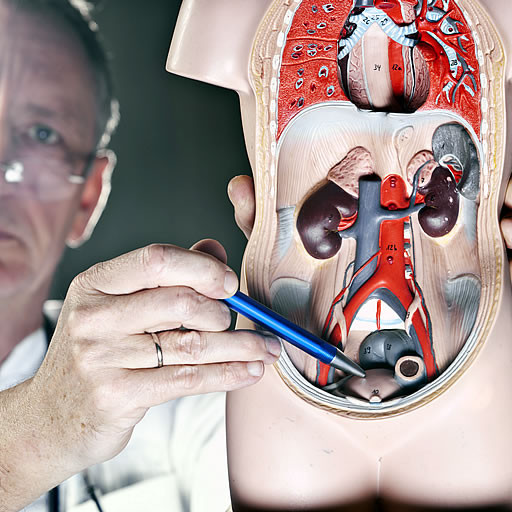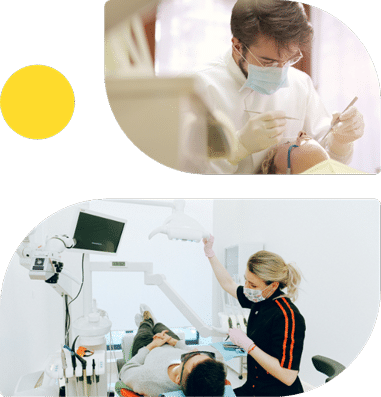The following are the tests done for diagnosing the enlarged prostate:
- You will be questioned in detail about your symptoms.
- A digital rectal exam may be held to determine whether a person’s prostate is enlarged or not.
- A urine test or urinalysis is another test that can help rule out an infection or other conditions that may result in similar symptoms.
- Transrectal ultrasound – Another ultrasound test will provide measurements of the prostate and reveal the particulars about its anatomy. This also helps doctors plan prostate artery embolization if needed.
- Prostate-specific antigen (PSA) blood test – In its normal functioning, a prostate gland produces Prostate-specific antigen (PSA), and it helps liquefy semen. However, with an enlarged prostate, PSA levels in semen increase too. Please note that increased PSA doesn’t necessarily mean enlarged prostate, as the levels may also get elevated by other reasons like prostate cancer, surgery, recent tests, or prostatitis (an infection).
- Urinary flow test – As the name suggests, the test measures the strength and overall amount of your urine flow.
- Post-void residual volume test – This prostate enlargement test checks whether a man can empty his bladder. The test involves using an ultrasound to measure the urine left in your bladder.
- Prostate biopsy – The prostate biopsy involves using transrectal ultrasound to guide the movement of a needle that takes tissue samples of your prostate. Examining the tissues from a biopsy using a microscope can help diagnose or rule out prostate cancer.
- Urodynamic and pressure flow studies – These medical procedures involve using a catheter threaded through a person’s urethra into your bladder. Water or air is slowly injected into the bladder to allow the physician to measure the bladder pressures and to determine how well your bladder muscles are working.
Once the diagnosis has been made, there is a choice between surgical and non-surgical treatment for BPH.
Prostate Surgery Non-Cancerous Prostate Enlargement Treatment Options:
With prostate surgery, non-cancerous prostate enlargement can be treated. There are many good options for doing this.
Firstly, we must mention that getting treatment is not necessary as long as the enlarged prostate doesn’t also result in symptoms. A prostate surgery non-cancerous, might result in some undesirable side-effects. Now, let us consider the various surgical options:
- Transurethral Resection of the Prostate (TURP)
Transurethral Resection of the Prostate (TURP) is the most common medical procedure used over the years to treat this problem. However, it can only be performed when the prostates are no more than 60 cubic centimetres in size. The surgery is often the default practice, and other less common options are often compared with it. The surgery involves the surgeon placing a unique lighted scope called a resectoscope into one’s urethra. He then uses small cutting tools to remove all but the outermost part of the prostate – the procedure is called prostate resection. TURP will generally provide relief from symptoms quickly.
Unfortunately, this surgery is not without possible complications, including heavy bleeding for a few days afterward. There may be a chance of infection, and you might be forced to need a catheter to empty your bladder. And you can’t do any heavy activities till the bleeding completely stops. Erectile dysfunction, urinary incontinence, and water intoxication are other common complications.
Transurethral Resection of the Prostate (TURP) is only done where the prostate is not too large. An open prostatectomy might be necessary if the prostate is too large or if bladder damage or other factors like bladder stones are involved. Openness means the surgeon will make an incision in the patient’s lower abdomen to reach his prostate.
Open prostatectomy has been considered the most effective treatment for men with severe prostate enlargement issues, but it also has several high risks of side effects and complications. The patient is typically expected to stay in the hospital for a few days, and there is an increased risk of blood transfusion.
Laser therapy or laser surgery, as its name suggests, involves using high-energy lasers to destroy or remove the overgrown prostatic tissue. Laser surgery is generally likely to relieve the symptoms right away, and one may have a lower risk of side effects than one does with Transurethral Resection of the Prostate (TURP). Laser surgery can be used in men who otherwise can’t have other prostate procedures because they are taking blood-thinning medications for some reason or other.
Laser therapy, too, is without its potential side effects, including the semen flowing backward into the bladder instead of out through the penis during ejaculation – called retrograde ejaculation, the loss of bladder control, or incontinence, and even impotence due to erectile dysfunction. And these side effects are pretty standard, too – that’s why laser therapy is not generally recommended to patients.
- Nonsurgical Treatment of Enlarged Prostate
So far, the discussion suggests that all surgical treatments have varying side effects. Fortunately, a new procedure has recently been developed that provides results comparable to Transurethral Resection of the Prostate (TURP) in recovery from the symptoms but without any side effects. It is called Prostate Artery Embolization or PAE and is available as a non-surgical treatment for an enlarged prostate in Mumbai. During this non-surgical treatment of an enlarged prostate, the patients are first admitted to the hospital after all basic investigations. Some pain medication, anti-inflammatory drugs, and antibiotics are given during the embolization procedure.
How Prostate Artery Embolization (PAE) Is Performed
Procedure Setup
Embolization is done under local anesthesia, usually through a unilateral approach via the right radial artery in the wrist. Initially, pelvic angiography is performed to evaluate the prostatic arteries.
Catheter Placement and Embolization
A 4 or 5-Fr angiography catheter is introduced to reach the prostatic artery. Then, a 2-Fr coaxial microcatheter is advanced into the ostium of the artery. Non-spherical PVA particles or embospheres are used to perform the embolization. The goal is slow flow or near-stasis in the prostatic vessels with interruption of arterial flow and gland opacification.
Completion and Recovery
After the embolization of both prostatic arteries is finished, the healthcare provider will remove the catheter. After a few hours (four to six), the patient can start walking around the room without needing a urinary catheter. By the end of the day, he can generally resume his normal activities. The Whole procedure will be done through a small nick around the skin in the groin region and will leave no ugly scars.
Results
After embolization, the shrinkage of the enlarged prostate should occur in 2-3 weeks. Thus, it is an effective BPH treatment without surgery.
Cost
Prostatic artery embolization cost in India can range from Rs 50,000 to Rs 2,90,000. The cost can vary depending on the patient’s condition and the complexity of the procedure.








